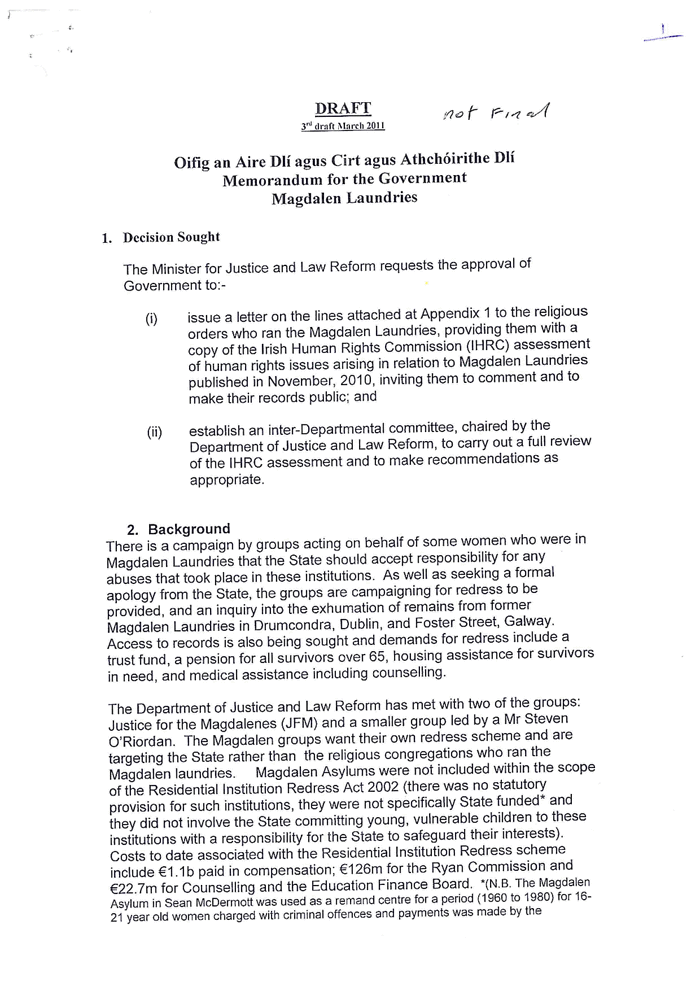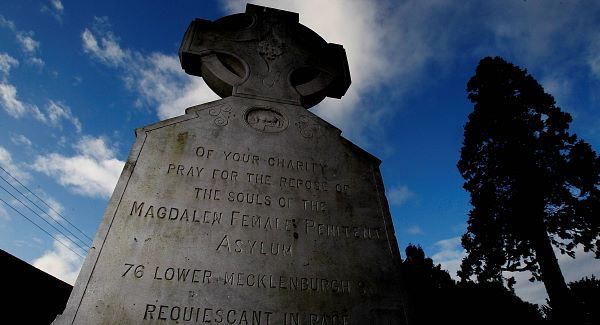We must support this group also
Innocent children abused at the Westbank Home and then abandoned by the State

I KNOW one of them fell off a train on his way home from school and two people have told me his shoe-laces were tied together. I know he never came back to school, and no-one ever mentioned him again, recalls Victoria White.
There was no enquiry. There were no charges. Most of my school-mates say they don’t remember the boy.
Here I am, a middle-aged, middle-class woman, who has a masters degree and can make a cappuccino. But I remember the Westbankers from my childhood. They were there.
I didn’t know then what was claimed in Mike Peelo’s 2011 RTÉ documentary about the Westbank Home for the children of unmarried Protestant mothers: that some children were beaten with electric flexes, that some ate dog biscuits, that some were sexually abused. Neither did I know that the children’s surnames were changed to that of the home’s supremo, Adeline Mathers, nor that some children didn’t know they were siblings.
It was one of the advantages of a Protestant education, in those days, that the schools had a mixed intake. There were several schemes to enable poor Protestants to attend private schools and my school, St Andrew’s College, in Dublin, did not charge the Westbankers fees.
But these children were not just poor; they were so vulnerable that I’ve carried the memory of them for four decades. I know they existed, and that recognition is all that some of them want.
Victor Stevenson didn’t connect his life with the history of abuse in this country until he saw an article on Westbank in this newspaper, and we have sent him on a painful journey of discovery. All he wants is recognition of what happened to him.
‘No’, we say. ‘You’re imagining things, Victor. You’re imagining jumping off the stage of a Gospel Hall in the North, where you were trucked to make money for Westbank. You’re imagining clutching the trousered leg of the good man who became your beloved adoptive father’.
But Minister of State, James Reilly, has intimated to the Westbank Survivors group that the institution will not come under the remit of the Commission of Enquiry, which was set up to examine the history of mother-and-baby homes and which is due to due to publish its terms of reference imminently.
“If you put into the enquiry every particular request, we would get an enquiry that would never end”, a spokesperson for the minister told the group.
True, Westbank wasn’t a mother-and-baby home, but it was the destination of many of the Bethany babies, and Bethany will be examined by the Commission. And Westbank was an unregulated home from which few babies were ever adopted.
This tribe of ‘Matherses’ went to school in the State education system, and Stevenson remembers the primary school feeding them bread. They had their immunisations in the State health system. A doctor was called when one boy was badly beaten up by Mathers herself. But it had nothing to do with us?
Westbank should have come under the remit of the Ryan Commission, in 2002, which included Protestant homes, such as The Cottage and The Bird’s Nest in Dun Laoghaire. But Westbank only closed that year. It’s taken a while for reality to bite. But now it has, with a vengeance. Stevenson mentions the names of people whose lives have been shattered and one of their faces flashes up in my mind from the low-church Protestant drills of my childhood.
Stevenson says the abuse should be the issue, not in which home it happened, and this is how the terms of reference of the Northern Historical Abuse Enquiry were framed. There were illegal adoptions from the home to the North and subsequent accounts of child slavery, including that of Andrew Begley, who was a small, barefoot child when Mathers rented him out as a farm labourer for £150 (sterling) a week. Still, the NI enquiry judges Westbank to fall outside its jurisdiction.
Sinn Fein and the Greens have pushed the issue in the Assembly, but there is strong blocking by the Democratic Unionist Party, possibly because the home was supported by fundamentalist Protestants. “Westbank was a mission station in the South”, Stevenson says. It was meant to make little Northerners out of little Southerners.
The children’s names were Anglicised. Colm Begley became Robin Mathers. He didn’t know his surname was Begley until Newpark Comprehensive School, in Dublin, refused to use the bogus name. He was 19 before he knew his mother had named him ‘Colm’, and still older when he realised that Andrew, another boy in the home, was his brother.
It seems as if the Irish authorities accepted Protestant homes as islands of Britishness and ignored them. If the children were trucked North and were never heard of again, what of it?
When we created the border, we created a crack through which people could disappear. That is exactly what the IRA found out when they sent their child abusers South. That’s why we have to have an all-Ireland abuse enquiry. I know, as Justice Minister Frances Fitzgerald said in University College Cork this week, it would be “very challenging”, because there are two legal systems. But there was nothing that wasn’t challenging about the peace process. And we have to look at the island as a whole if we are to make peace with our past. That’s the issue. Minister Fitzgerald understandably focussed on avoiding “immediate risk” to children. But even if abusers are dead, we can’t be sure that abuse of children, sanctioned or ill-policed by organisations with their own agendas, won’t happen again. That’s the only way to “finish this awful mess”, as Stevenson says.
Instead, the Westbank survivors have met a brick wall. Tragically, the Health Service Executive-funded Protestant Adoption Society (PACT) handed back the Westbank records to the Plymouth Brethren trustees of the home, in the wake of the RTÉ documentary. So, the Westbankers have no access to what little may be recorded of their early lives. Cork-born Stevenson has been told he has no records. “That’s a crushing thing”, he says. “I didn’t exist.”
‘Truth and reconciliation’ is a different process to compensation. You can’t compensate a person for a childhood, because it can’t be bought back.
For many Westbankers, the key thing is for the State to acknowledge that it failed in its duty of care to them when they were innocent children who had done no wrong, except to be born to a mother who couldn’t keep them.
I hope this State gives them justice, before it is forced to do so by the European Court of Human Rights.
I know the Westbankers existed, because I was raised with them and I can still see them in my mind’s eye. And I won’t shut up until everyone else in this country can see them, too.
Some children were beaten with electric flexes, some ate dog biscuits, some were abused
© Irish Examiner Ltd. All rights reserved
Read the full article »











